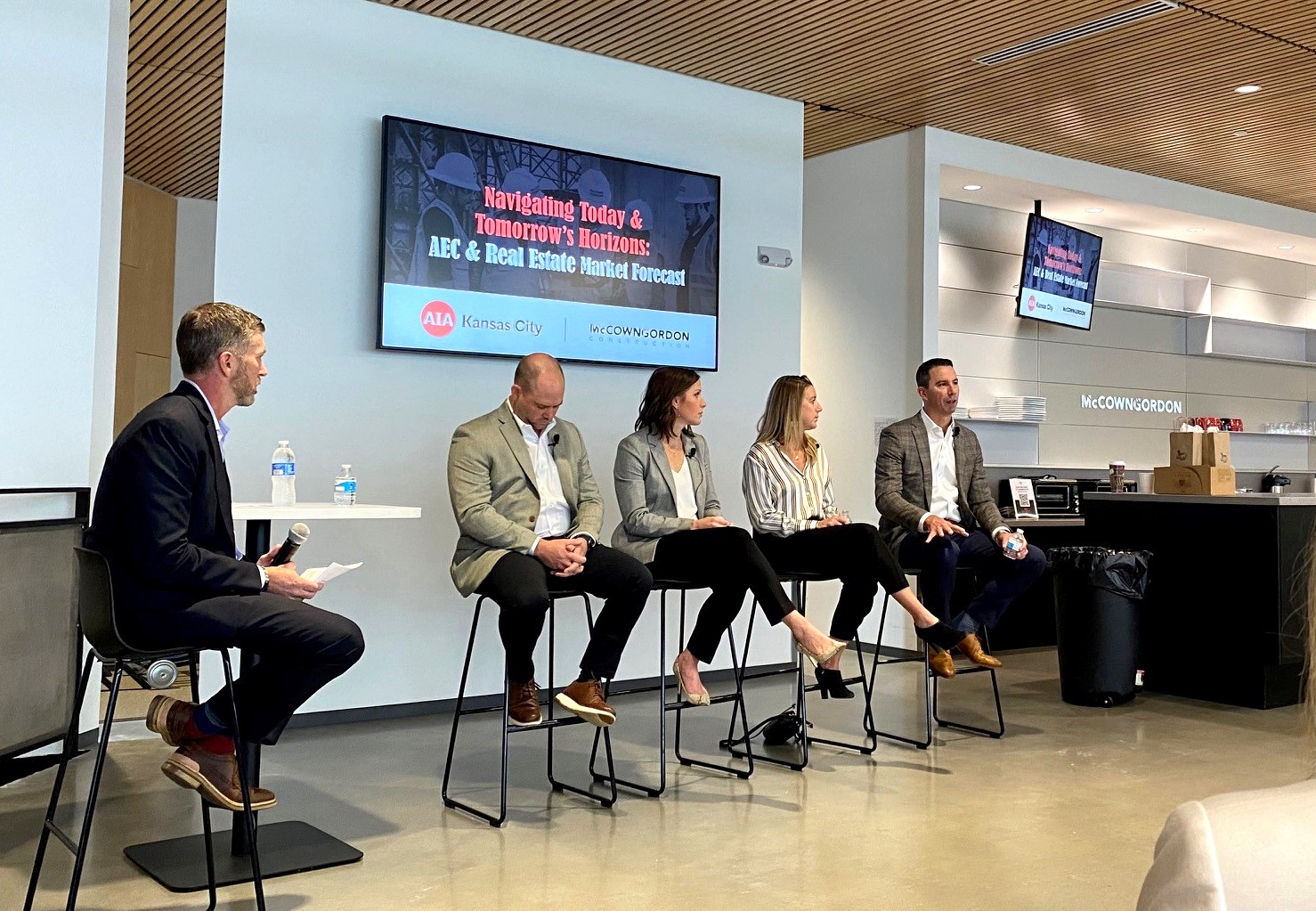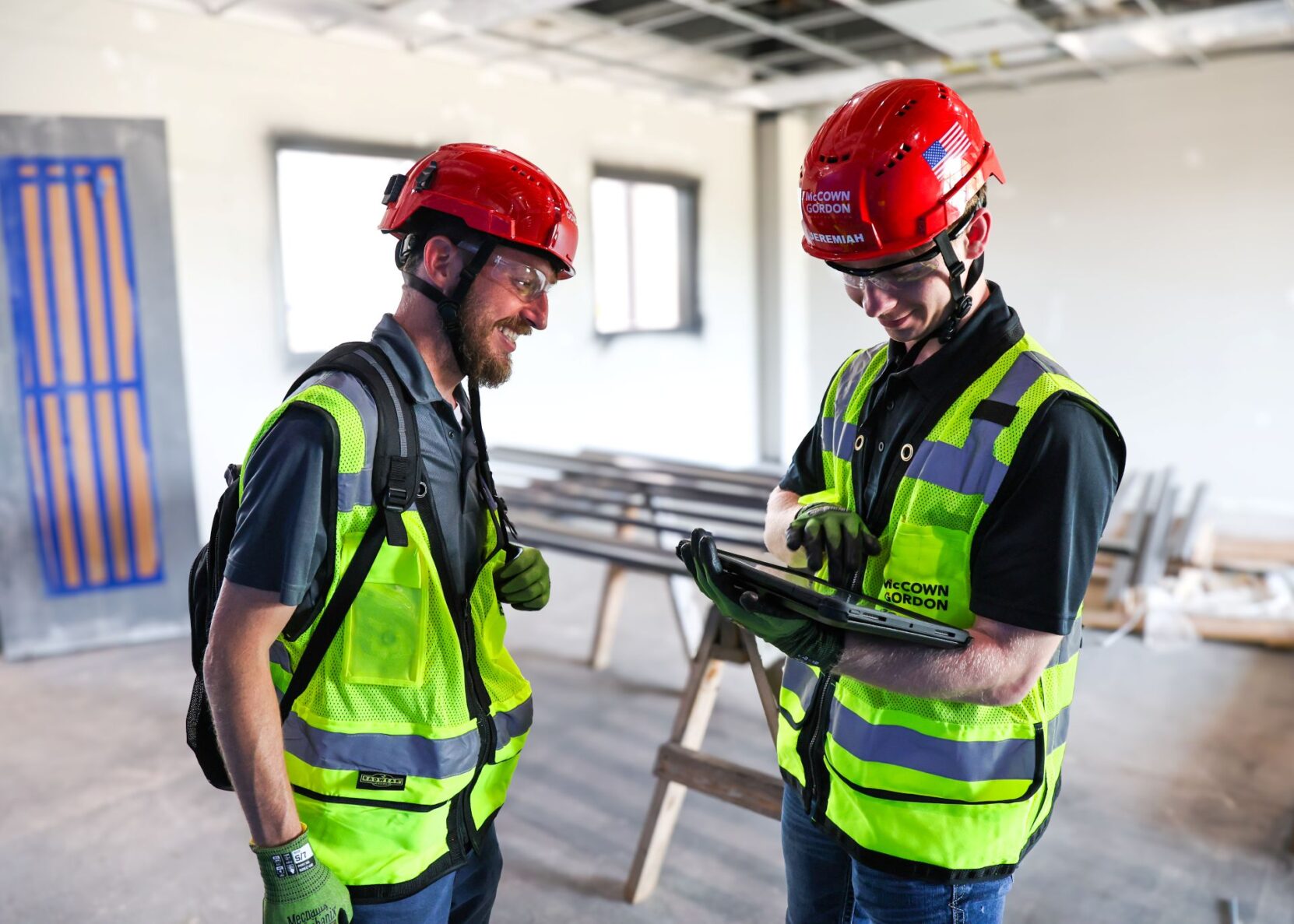Top Takeaways From Recent AIA Panel: AEC & RE Market Forecast
Navigating Today and Tomorrow's Horizons

Since late 2020, the architecture, engineering and construction industry has been navigating significant cost increases and procurement concerns. The last 12-18 months posed a different problem: significant increases in the cost of money. What is this so-called “wall of debt” looming in the commercial real estate world? Are interest rates backing down? What markets hold the most opportunity? Scott Kimzey, senior director of preconstruction, moderated a panel of industry experts to get the latest AEC & RE market forecast.
As Kimzey mentioned, “It’s not all doom and gloom. These recent challenges bring significant opportunities to get creative and capitalize on the positives. With mega-projects entering the KC region, we’re still seeing a significant amount of work going on in various markets”.
Here are several top takeaways from the discussion:
Managing the cost of work
“The cost of doing work went up 10-12% over the last few years, largely due to the cost of labor,” said Elise Kirchhofer, COO at Hoefer Welker. The latest Architectural Billing Index report was down to 44.8, the lowest report since the height of the pandemic. (Below 50 indicates a decline). “This report shows the number of design firms reporting a decrease in billings has increased significantly. In addition, the value of contracts being signed is a lot less than we’ve seen in recent years” Kirchhofer added.
While it hasn’t been easy, firms have adjusted to these cost increases and have recognized the importance of diversification of work in various markets to reduce the impact. Despite these challenges, work is still getting done. “Firms now have to chase more work to pay for the same overhead,” Kirchhofer said. Regardless, the market is busy.
Shifts in interest rates continue. But are we at the peak?
“We finally caught our breath with construction cost increases and procurement times just in time for interest rates to spike,” said Grant Harrison, Executive Vice President at VanTrust Real Estate. “Lending has slowed significantly, thus securing construction loans for new projects has proven to be very challenging” Harrison continued.
“During the pandemic, the cost of money was near zero; you almost couldn’t go wrong with the interest rates out there. Times have changed,” Kimzey added. According to industry experts, there’s positive news on the horizon—the Fed is anticipated to be approaching its peak of interest rate adjustments.
What is this “lingering wall of debt”?
“There’s currently $4.6 trillion in commercial real estate debt with $1.2 billion of this is likely distressed,” said Todd Reynolds at KeyBank. “Investment sales are down significantly. We see quite a bit of pain in the next 18 months as this volume comes through. You’re going to have to pay to play; there has to be some equity and reserve,” Reynolds continued.
Harrison also added he expects the next few months to be quite choppy until some of this debt loosens up. The bright side? We’re still seeing great opportunities coming from mega-projects and several sectors. Although it hasn’t been easy, architecture, engineering and construction firms are still thriving in this volatile market.
The “halo-effect” of mega-projects
With mega-projects comes the demand for a skilled workforce, expanded infrastructure and readily available supplies. “We’re seeing a major resurgence in industrial with manufacturing moving on shore,” said Harrison. “For example, Intel is developing a $25 billion chip manufacturing plant in Ohio which brought VanTrust the opportunity to become the master developer of the supplier park, directly adjacent to the project”. The $4 billion Panasonic battery plant in De Soto, Kansas will have the same halo effect. The mega-project will drive significant economic activity and opportunity for the local economy, driving additional construction projects in the surrounding areas.
Reynolds added that Kansas City has always been a robust data center market. However, with these data centers and light manufacturing projects comes a desperate need for increased local utility infrastructure to support the massive amounts of power, water and gas needed.
Flight to quality continues
The office market continues to shift, both regionally and nationally as the flight to quality and class A office space continues. In efforts to get employees back in the office, corporations are spending the money to make it happen. Class A office space is flying off the market as corporations search for high-quality, amenity-filled office space.
On the flip side, “this leaves the Class B, vanilla properties with no amenities and no attraction. These types of buildings often don’t convert as well, particularly in the suburban market,” said Anné Erickson at JLL. Developers have explored opportunities for converting these underutilized buildings into residential spaces, mixed-use developments or other alternative uses. However, the success of these conversions is not always as promising as desired. Unfortunately, when these efforts fall short, the only viable option may be the demolition of these buildings, pointed out by Harrison.
Significant opportunity in public-private partnerships
The public-private partnership (P3) delivery method remains strong. P3’s typically use the design-build project delivery method where the architect, contractor and developer work as one team under one contract to provide a design-build finance model. This process guarantees cost and schedule and removes the risk from the owner. “You can spread your costs over a much longer time period,” said Reynolds. This particularly works well when developing community assets like libraries, parks, and community and civic buildings.
The importance to diversify your portfolio
Overall, the market is still strong and there’s opportunity in every sector. “We continue to see a huge flex in healthcare across the nation as well as higher education and municipal work,” said Kirchhofer. Kimzey echoed this comment and mentioned McCownGordon has seen a huge uptick in public work thanks to the recent ARPA funding.
“When you see a downturn like this in certain sectors, it emphasizes the importance of diversifying your portfolio to minimize the impact,” Kirchhofer added.




